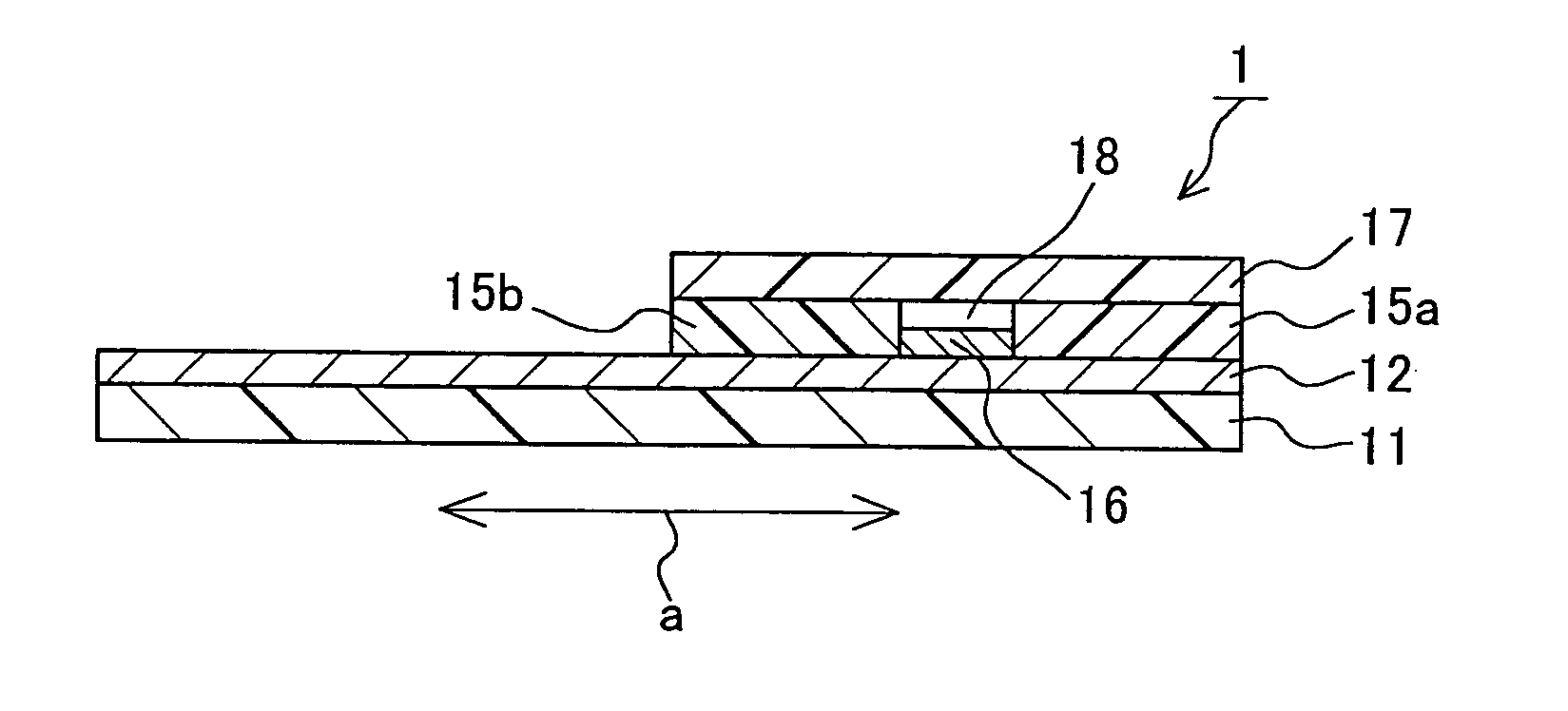Biosensor
- Summary
- Abstract
- Description
- Claims
- Application Information
AI Technical Summary
Benefits of technology
Problems solved by technology
Method used
Image
Examples
example 1
[0084] A biosensor provided with gold electrodes (hereinafter, referred to as "gold electrode biosensor") as shown in FIGS. 2A-2C was produced in the following manner. First, a transparent PET sheet having a length of 30 cm, a width of 30 cm, and a thickness of 250 .mu.m (hereinafter the same) was prepared as a supporting member, and gold was deposited on one surface of the PET sheet. The deposition of the gold was performed under the same conditions as described above. The purity of the gold was 99.95% or higher.
[0085] Then, using a kisscut device, linear slits having a depth of 0.1 mm and a width of 0.1 mm were formed on the surface on which the gold was deposited of the PET sheet. The slits were formed in one direction so that the distance between the adjacent two slits would be 1 mm and 5 mm alternately (hereinafter, referred to as "half cut"). These slits served as insulating portions 14, thereby dividing the gold deposited into a working electrode 12 and counter electrodes 13....
example 2
[0096] A biosensor was produced in the same manner as in Example 1, except that the solution B was prepared using, as an inorganic gel, a product named Laponite XLS (Laporte Industries, Limited) in place of the Lucentite SWN.
example 3
[0097] A biosensor was produced in the same manner as in Example 1, except that the solution B was prepared using 1.0 mL of purified water in place of 1.0 mL of the inorganic gel solution.
PUM
| Property | Measurement | Unit |
|---|---|---|
| Particle diameter | aaaaa | aaaaa |
| Particle size distribution | aaaaa | aaaaa |
Abstract
Description
Claims
Application Information
 Login to View More
Login to View More - R&D
- Intellectual Property
- Life Sciences
- Materials
- Tech Scout
- Unparalleled Data Quality
- Higher Quality Content
- 60% Fewer Hallucinations
Browse by: Latest US Patents, China's latest patents, Technical Efficacy Thesaurus, Application Domain, Technology Topic, Popular Technical Reports.
© 2025 PatSnap. All rights reserved.Legal|Privacy policy|Modern Slavery Act Transparency Statement|Sitemap|About US| Contact US: help@patsnap.com



